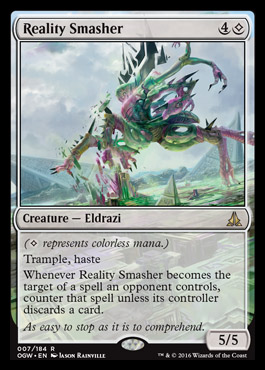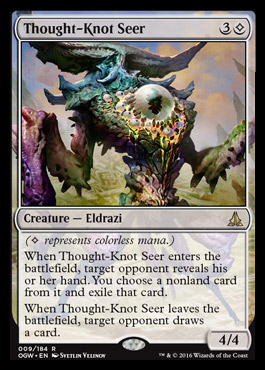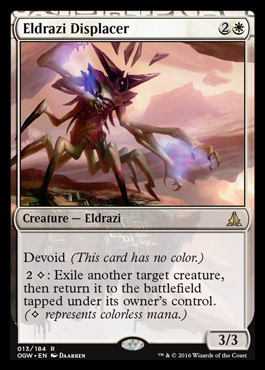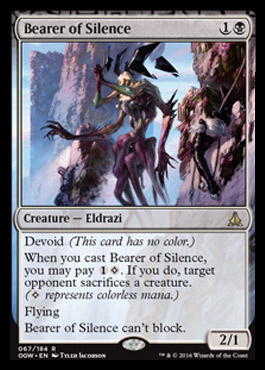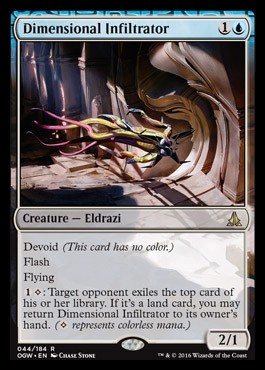let me make one key fix:
(assumed as 90% of the time).
-And did you factor in the chance you actually
need to be casting your
one 3<> creature (even though all the eldrazi we are talking about using have normal colored costs) on turn 4? How often will you have drawn that in your first 4 turns? He doesn't touch on that at all, because he's making a ton of
assumptions.
-For one thing, he seems to be aiming this more at constructed play, where you may be curving out more, and will be having 4-ofs etc. I think curve-outs are less common in draft anyway?
-These changes seem relatively painless? (no pun intended). Y'all assume just a pile of fetches and shocks are the best, but there would be little to no difference in my mind.
-Let me take the data to the grindstone: My favorite place to go, the
3-0 thread, and lets look at a deck that 3-0'ed, and look very well built. Props to shamizy's team that made this!
Sultai
First:
# Green sources = 12.5
# blue sources = 9.5
# black sources = 9.5
(marked wayfinder as 0.5 for each, and the brainstorms were 0.5 each)
Some case studies:
Courser of Kruphix: need
13! Behind by 0.5 for an on curve cast.
Hero's Downfall: need
13! We are waaaay behind.
Brainstorm: need 10! no good. but wait, you never need to cast this turn 1, cause bad... so: turn 2 is the earliest. looks ok.
Skinrender: 12. Behind by a lot still.
Titania: 11. Barely makes it.
Glen Elendra Archmage: Needs 7, so this is good by 2.5.
Baleful strix: I'm supposed to have
14! lands that tap for U/B. I count..... 2 (marsh flats and watery grave). We do make the 9 of each rule, but that's thanks to our 'storms and 'finder. Taking into account that you can't cast wayfinder the turn before strix, and now you need all three colors by turn 3.... ehh.
-So my
main question is, how much does this "90%" actually matter in cube? We aren't charging ahead with 1 line of play towards victory, and it's a singleton format. This stellar 3-0 deck falls behind on
most of it's cards.... So I'm not sure what to take from that? If everyone's manabases are already "bad", then you are on level playing field building an also "bad" manabase cause you wanna support your blink-drazi. And this is better than a lot of the mana bases I've seen in 3-0 lists!
-We also run a
lot of card advantage generation in our average cubes. 5 brainstorms? 3 brainstorms? Oath of Nissa? Ponder? Scry effects?
-In general, just taking a source at face value can be detrimental. I could tear into some other
3-0 decks, and find discrepancies like this, in cube formats that are very very competitive.
Takeaways:
This is obviously a YMMV topic. Competition level, color density, complexity level, power level. These can all play a part. I guess it doesn't sound like the best of ideas for ahadabans cube and group. But for another cube out there, the "downside" just might not be there. Painlands might be the correct power level for lands already for their environment. There might be
more than one 4 drop in your deck, most of which have colors, mitigating the need to cast on t4.
EDIT: My personal stance: for all of you out there in the void, who are loving that Worldbreaker (
and haven't made an account yet to say how much you like it), don't sweat the one <> symbol too much. I think your drafters will be A-OK. I'll be doing just that.

